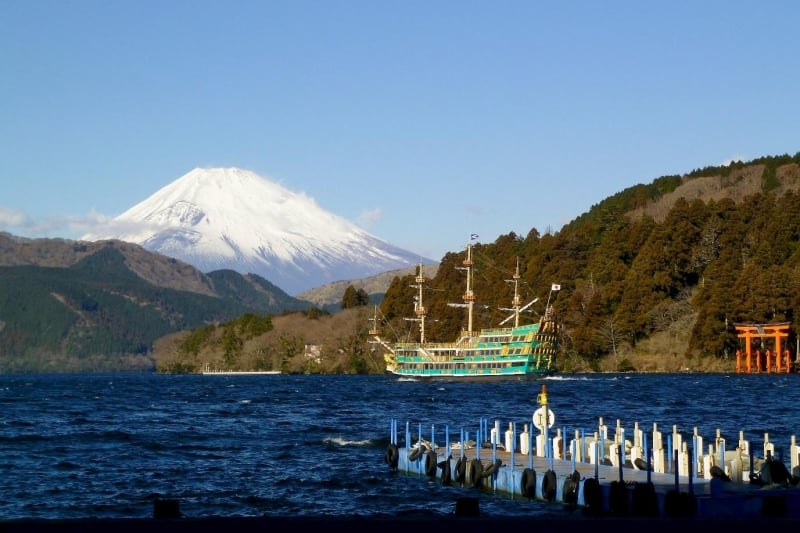
Image credit: Quercus acuta
Located just a few hours away from Tokyo’s bustling city centre, Hakone offers lush greenery, a scenic lake, a melting pot of onsens and if you’re fortunate enough, a grandiose view of Mount Fuji. It’s no wonder that Hakone is a popular choice as a weekend getaway and holiday destination for Tokyoites and foreign tourists alike.
If you’re short of renting a car, the Hakone Pass is a great way to get around this laid back city, as it offers unlimited train, bus, ship and cable car rides operated by Odakyu. So, here’s a guide on how you can get the most out of this pass!
Hakone-Yumuto
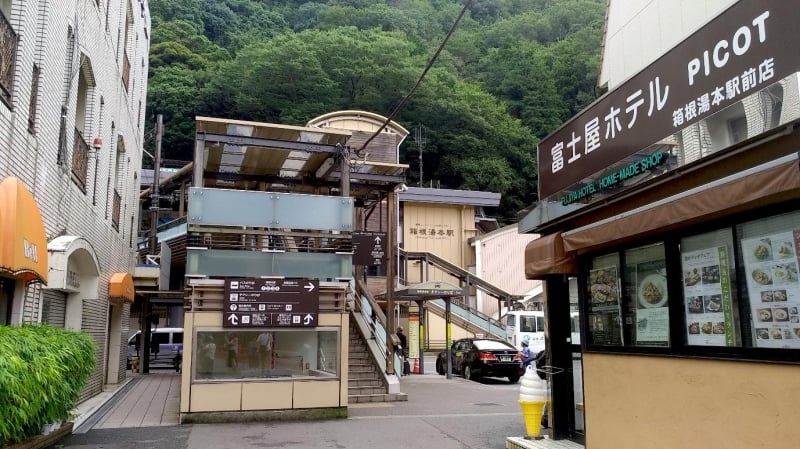
Image credit: Alvinz
Your first stop from Tokyo would be Hakone-Yumuto, where a host of onsens and shopping options greet you just outside the station. This is the perfect spot for a half-day trip from Tokyo if you’re thinking of a quick getaway.
Find a hot spring to soak into, or head over to the shotengai (shopping street) to get souvenirs, or try out local specialities.
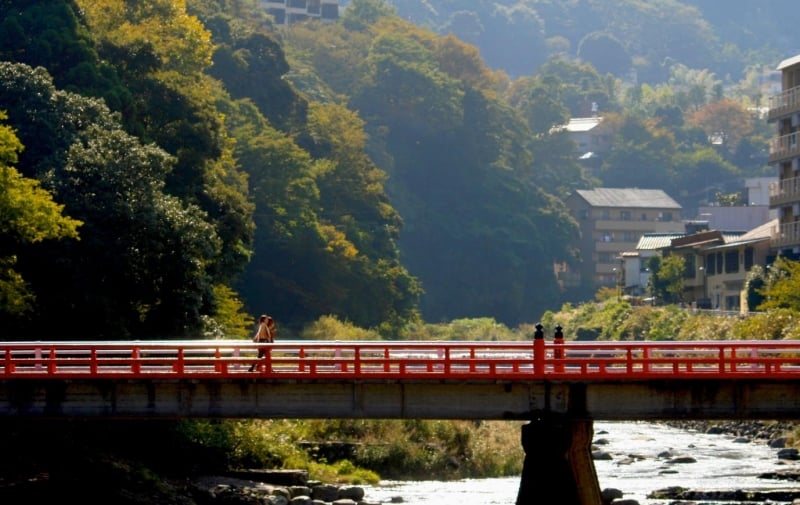
Image credit: Akuppa John Wigham
Be sure to catch the outstanding views from the nearby Ajisai-bashi – a spot which has been the inspiration for several pieces of ukiyo-e art. Walking through Ajisai-bashi would lead you to the Sounji temple, which was built during the Edo period.
There are several cultural and historical artifacts stored in the temple and the area outside make for a peaceful stroll amidst nature and traditional Japanese landscaping.
Hakone Tozan Railway
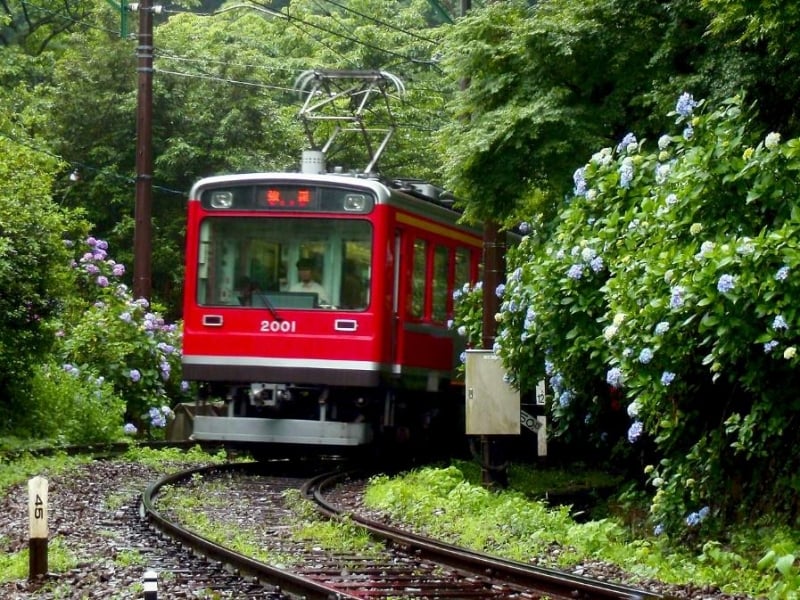
Image credit: Cassiopeia sweet
Continue on your journey from Hakone-Yumuto with the Hakone Tozan Railway. This is a mountainside ride that will take you through stunning vistas around the area that change with the seasons.
Some of the best times to get on this line would be from mid-June to early July, when the hydrangeas are in full bloom; in the autumn; and in the winter when pure snow covers the landscape. Enjoy the view till you reach the second-last stop – the Chokoku No Mori Station.
Open Air Museum
Access: Chokoku No Mori Station, just before Gora Station
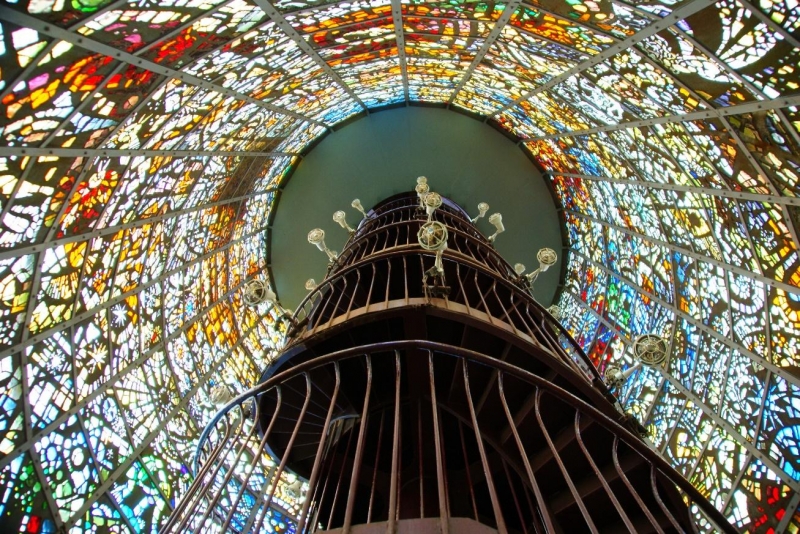
Image credit: JeHu68
What better way to enjoy art than amidst nature? As the name suggests, you can explore over 1,000 beautiful structures and art pieces in this museum, while you roam around the park-like compound. The museum is located within the Fuji-Hakone-Izu National Park. A notable section of the museum is the Picasso Pavilion, dedicated to the famous artist, with around 300 of his works housed in an indoor exhibition.
Hakone Glass No Mori
Access: Take the Hakone Tozan Bus (Routes S, M) from Gora Station and alight at Hakone Glass Forest Venetian Glass Museum stop (443) (about 17 minutes)
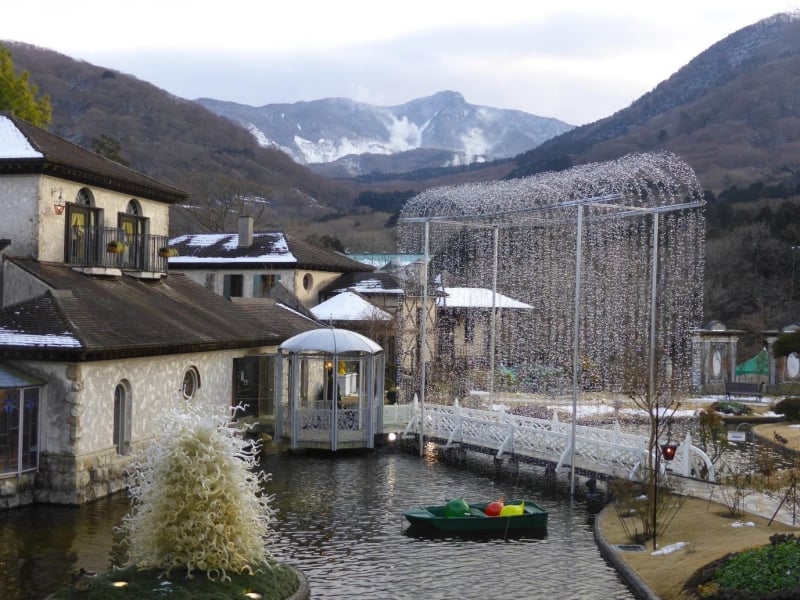
Image credit: Stephen Colebourne
If you’re a fan of glassware and glass art, this is a place to visit. And even if you’re not a glass enthusiast, this theme park about Venetian glass is still a place you should have on your itinerary.
Besides a beautiful garden, the park features Italian-style buildings, museums of glass art, shops and workshop experiences.
Sengokuhara Pampas Grass Field
Access: 9-minute bus ride on Togendai line from Glass no Mori, alighting at Sengoku Kogen (仙石高原)
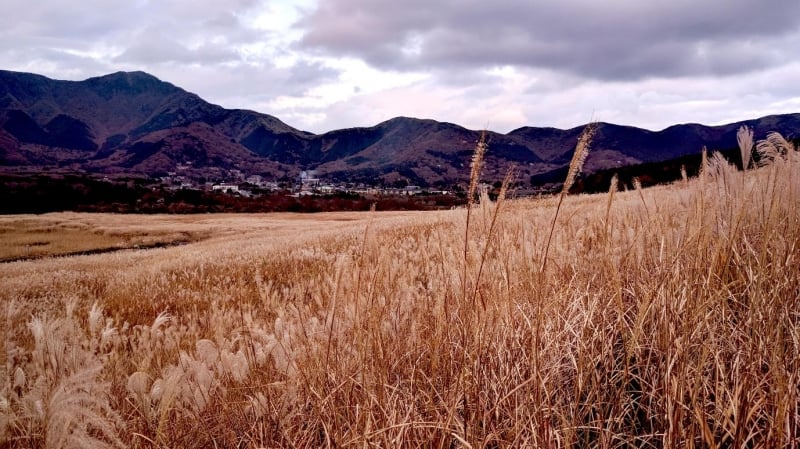
Image credit: Seiya Ishibashi
These sprawling fields of faint golden pampas grass make for tranquil sights and great photo ops. The grass go through various shades of green and gold throughout the year, so they are a sight to behold whenever you head there so. However, autumn is still a popular time to visit the fields. A single path buts through the field, leading you to a higher vantage point and expansive views of nearby mountains and wetlands.
Hakone POLA Museum of Art
Access: From Sengoku Kogen stop, take the Hakone Tozan Togendai Line (for Pola Bijutsukan) and alight at Pola-Bijutsukan stop
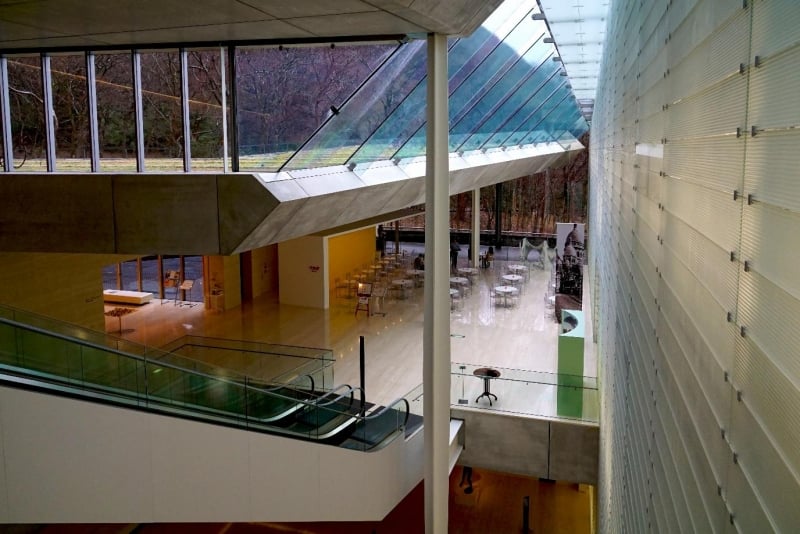
Image credit: 663highland
Opened by the POLA group, a skincare and cosmetics company, this museum features a massive collection art featuring the company’s late founder, Suzuki Tsuneshi. Most of the museum was built underground so that its presence will not to disrupt the natural environment around it.
The works housed here are mostly Japanese and European. They span across various genres and feature ceramics, glassware, contemporary paintings and sculptures.
Hakone Touzan Cablecar & Hakone Ropeway
From POLA Art Museum, take the Kanko Shisetsu-Meguri bus back to Gora Station
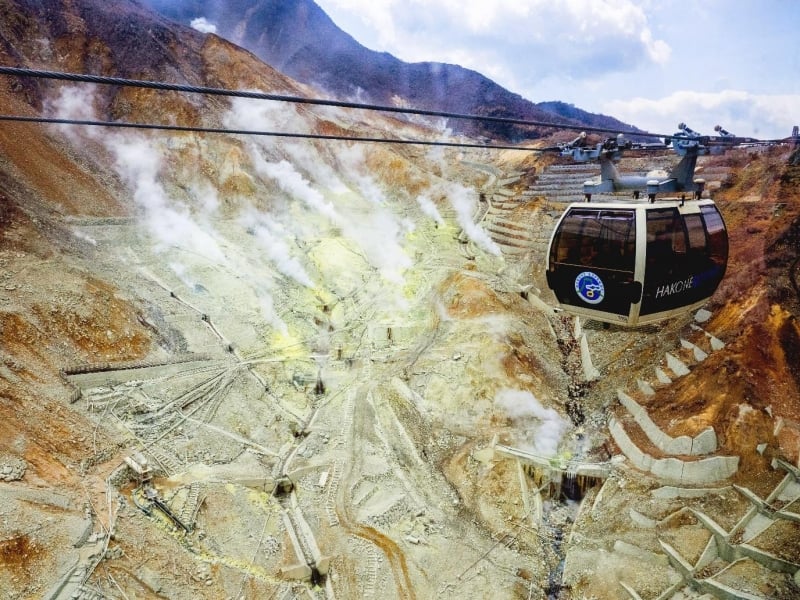
Image credit: Ajay Suresh
Next, head over to Sounzan through the Hakone Touzan Cablecar from Gora station, and transfer to the Hakone Ropeway. Throughout the 30-minute ride on the ropeway to Owakudani station, marvel at the otherworldly sight of thick fumes rising out of the rocky slopes below.
Owakudani
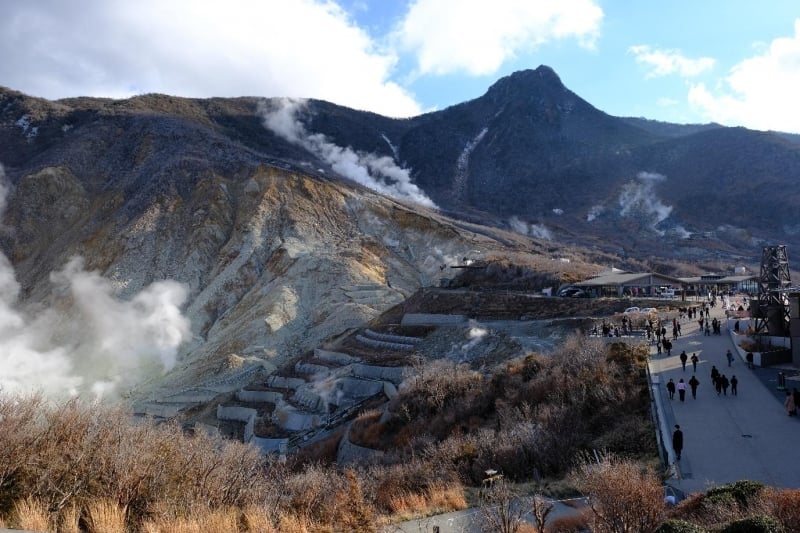
Image credit: tosh chiang
Owakudani is an area around a crater that was formed after Mount Hakone’s last eruption 3,000 years ago. Amidst the extreme landscape and sulphurous fumes, you can buy kuro-tamago here – eggs cooked in the waters and blackened by the sulphur. Legend has it that these eggs extend one’s life by seven years!
A 10-minute hiking trail leads from the ropeway station to many hot springs and lakes – all while offering views of Lake Ashi below and, on clear days, Mount Fuji too.
Lake Ashi (Ashinoko)
Access: From Okawakudani, take the Hakone Ropeway to Togendai station
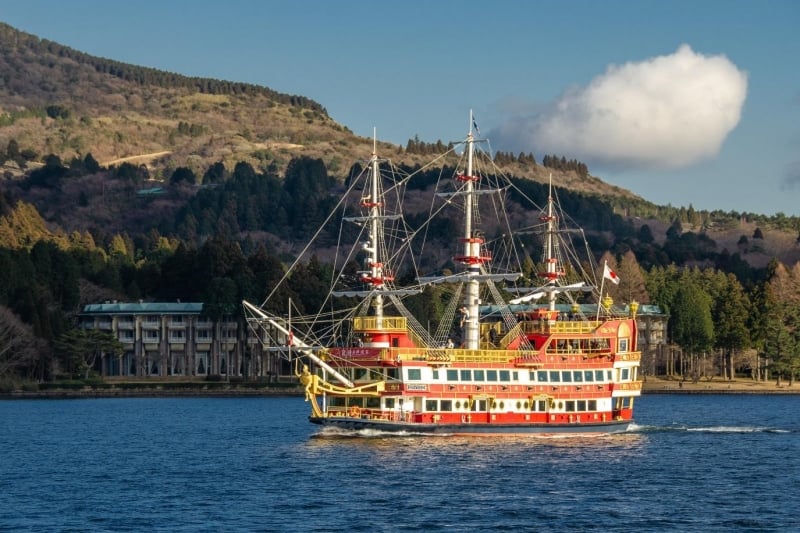
Image credit: pen_ash
Definitely one of the most well-known sites that Hakone offers, Lake Ashi, or Ashinoko, is a deep blue crater lake surrounded by mountainous green lands under a wide sky. On a clear day, the lake offers the iconic view of the red torii by the waters, and the summit of Mount Fuji.
With the Hakone Free Pass, you can hop on the best-looking ride around the waters – the Hakone Pirate Ship for as many times as you like and traverse the waters like a true swashbuckler!
Hakone Shrine
Access: From Togendai station, get on the Hakone Pirate Ship and get off at Moto-Hakone pier. The shrine is a five-minute walk away.
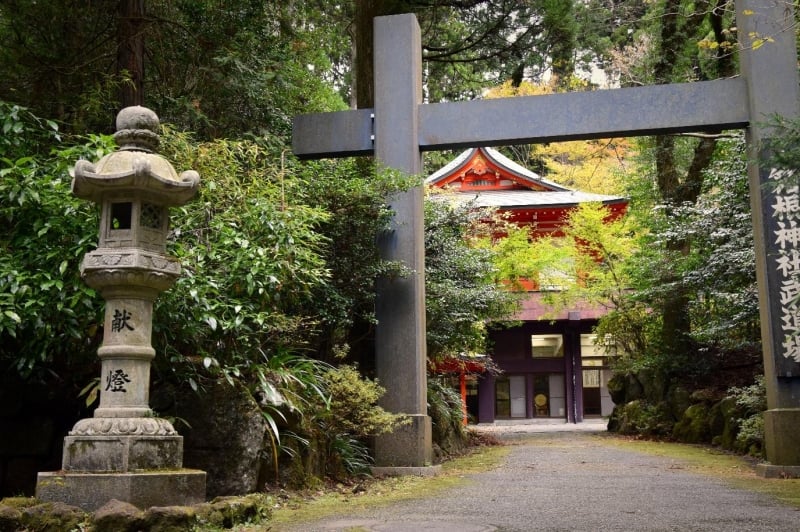
Image credit: Raita Futo
The Hakone Shrine is nestled among thick forestry at the foot of Mount Hakone, and it’s easily identifiable with its lakefront torii gate that greets cruise ships as they pass by. Once inside, you’ll be taken to another world in comparison to the nearby Lake Ashi. Following the path from the shore, you’ll make it up to the shrine’s main buildings, which takes on a mythical feel when shrouded in a cool fog.
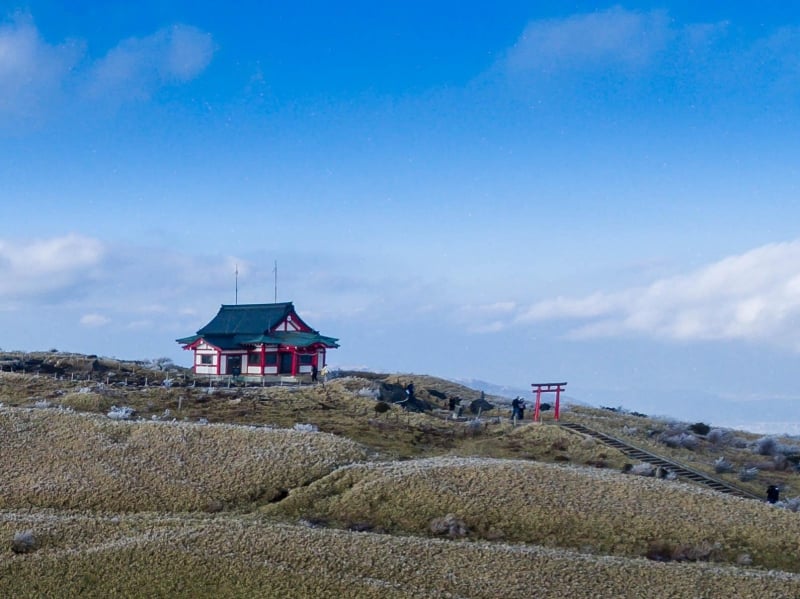
Image credit: Marco Verch Professional Photographer and Speaker
Hiking further up further to the summit of Komagatake, you will arrive at the original Hakone Shrine, Mototsumiya. Here, it gets very foggy as the air is dense – elevating the otherworldliness of the area even further. Mototsumiya is also accessible by the Hakone Komagatake Ropeway.
Hakone Detached Palace
Access: From Moto-Hakone Pier, Hakone Detached Palace is a 10 to 15-minute walk away.
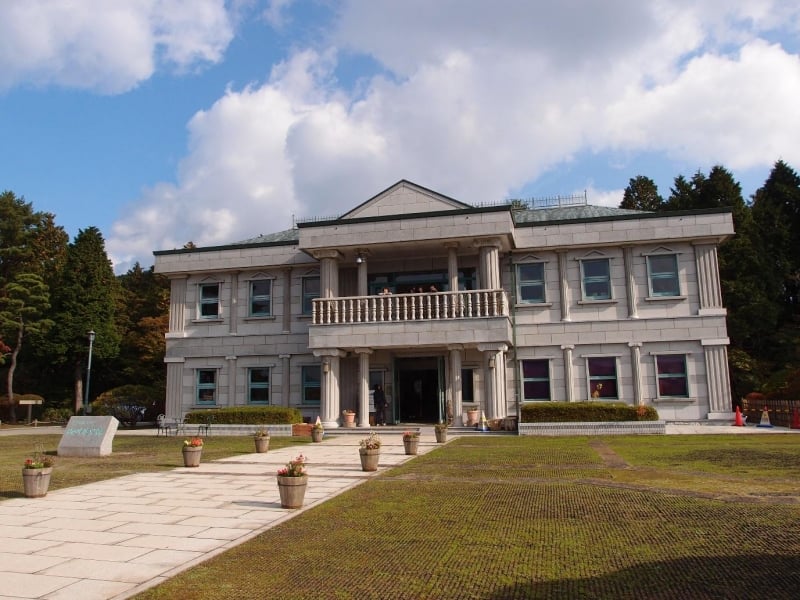
Image credit: Guilhem Vellut
The Hakone Detached Palace – a former summer imperial residence – offers great views of the lake and the mountain. Be sure to enjoy both vantage points; from the lakeside observatory tower and the Benten no Hana observatory.
Old Tokaido and Hakone Checkpoint
Access: From Hakone Detached Palace, Hakone Hakone Checkpoint is a two-minute walk away.
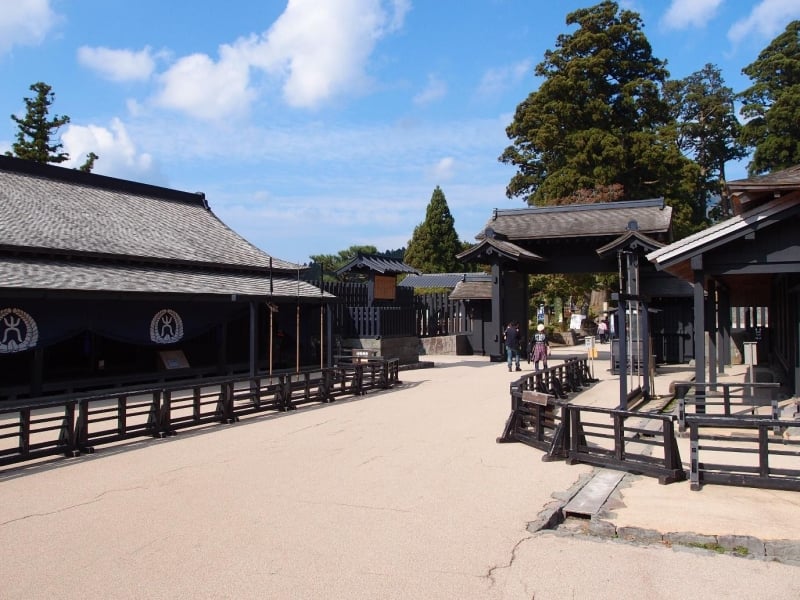
Image credit: Steph Gray
During the Edo period, travellers to Edo from Kyoto knew that they were in the final leg of their journey when they arrived at the Hakone Checkpoint (Hakone is the last stop before Edo along the Tokaido route). Today, the site of the checkpoint has been restored after a three-year reconstruction effort, and now features gates, fences, quarters for troops, a prison chamber and a lookout tower. The Hakone Sekisho Shiryokan museum also gives further insight into the checkpoint’s history.
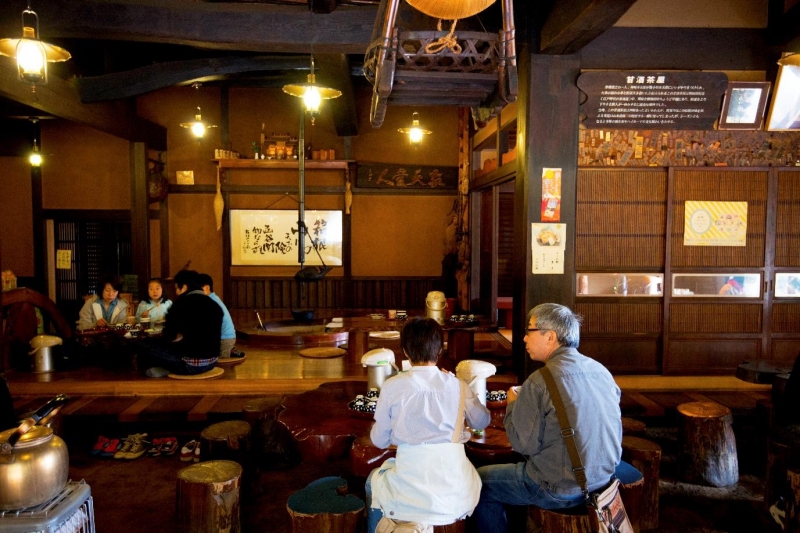
Image credit: Maarten Heerlien
From the checkpoint, walk among the towering trees at Cedar Avenue and explore parts of the original Tokaido route that have been preserved. Allocate some time to stop over at the 400-year-old Amazake Chaya Teahouse for some amazake (a sweet, low-alcohol drink made from fermented rice) and Japanese snacks.
Odawara castle
Access: It’s time to head back! Return to Moto-Hakone and hop on the Hakone Tozan Bus back towards Hakone-Yumuto Station. On the way back from Tokyo, get off at Odawara Station.
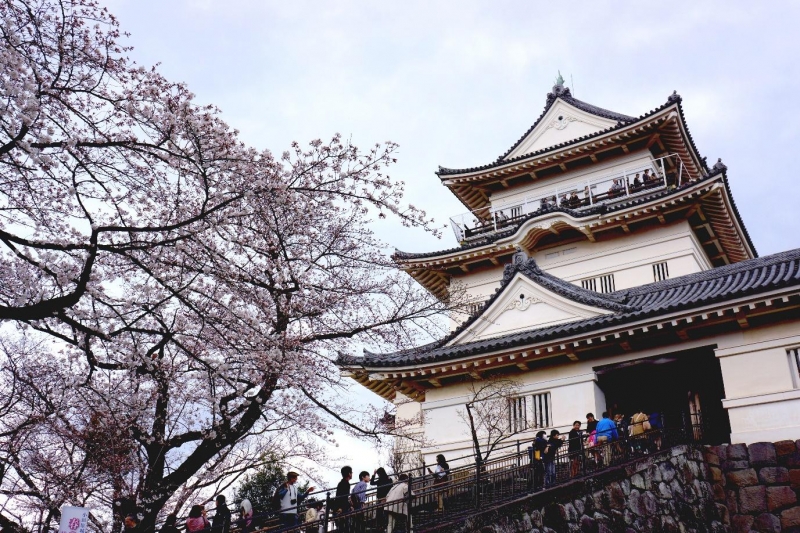
Image credit: Kentaro Ohno
An important and beautiful part of Japanese history, the Odawara Castle was originally built in the 15th century. The current site is mostly a reconstruction of the original structure, which was damaged at the hands of numerous earthquakes – you can still find debris around the castle park.
Inside, there is a museum that showcases videos of the castle’s historical significance. Head to the highest floor if you want to get a great view of Sagami Bay. The castle grounds also make for a popular hanami spot – especially in April when you’ll get to see cherry blossoms, Azaleas and many other blooms in delightful bursts of colour.
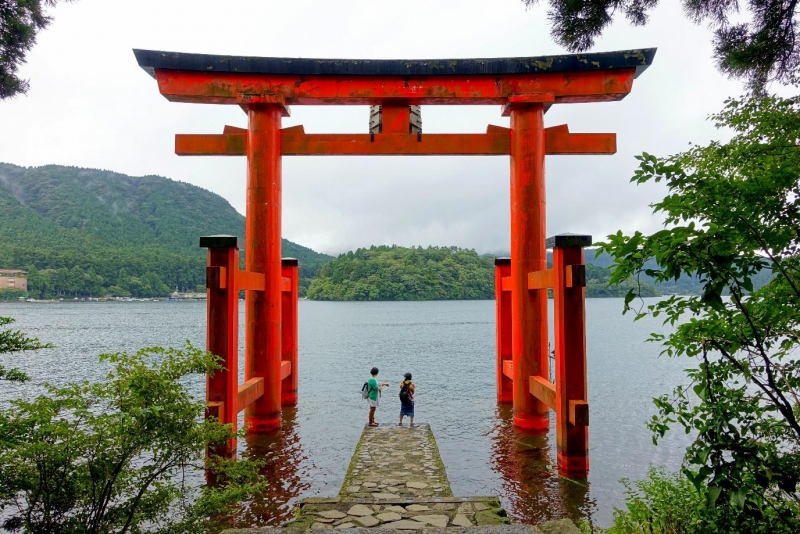
Image credit: Daderot
Since this itinerary is akin to the famous ‘Hakone Round Trip’, you may want to venture out and explore other areas, such as the Gotemba Premium Outlets that’s a bus ride away from Togendai; the Hakone Art Museum with its beautiful moss; landscape gardens that are accessible from Koenkami Station via the Hakone Tozan Cablecar; and Narukawa Art Museum that’s near the Moto-Hakone Pier. The best way to enjoy Hakone is to allocate at least a night or two there, so you’ll have enough time to soak it up in a soothing hot spring and enjoy great food at a ryokan. Have fun!




